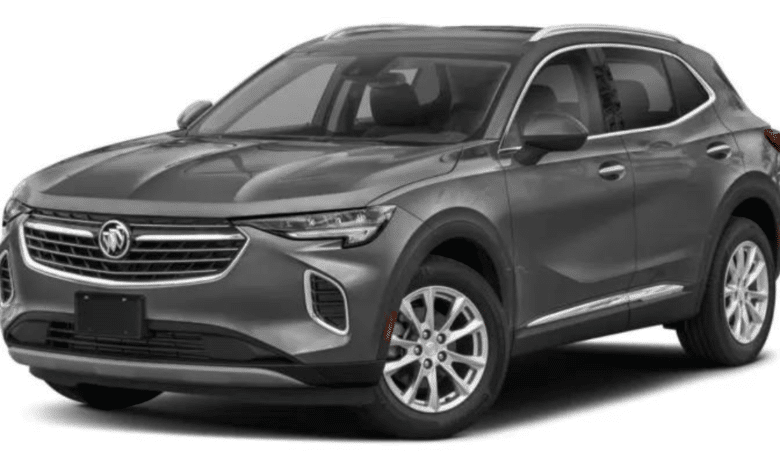The 2023 Buick Envision is a small SUV targeted at families that want something fancier than a Chevy but don’t…
Read More »Buick
About Buick
David Buick, a Scottish inventor who resided in Detroit, Michigan, established the Buick Motor Corporation in the early 1900s, making it one of the country’s oldest automakers. He is most known for creating the overhead valve engine, intended to provide greater power than the time’s flathead engines.
When William Durant took over Buick in 1904, he introduced the Model B, the company’s first mass-produced automobile. Durant would later form General Motors, the overhead valve engine of the touring car that produced between 15 and 21 horsepower. Buick immediately came to be associated with strength, and the Model B’s sales success solidified its position as the market leader before Ford and Cadillac. In the 1930s, Buick introduced the 8-cylinder Century sedan and unveiled the Y-Job two-passenger convertible, the first concept automobile ever seen.
Buick continued innovating during the 1950s after World War II, adding iconic design elements like portholes, the sweepsear beltline, and the waterfall grille, as shown on the 1953 Super Riviera Coupe. Throughout the 1950s and 1960s, the business also catered to public demand for more compact cars and convertibles, garnering popularity for models like the Electra, Skylark, and Wildcat. But in the 1980s and 1990s, Buick veered off course due to an excessive focus on performance over elegance.
A younger generation purchasing cars in the 2000s lost interest in Buicks. Sales declined due to the company’s excessive attention to its previous glories and Buick’s pigeonholing as the brand associated with America’s older population.
Buick was on the verge of leaving business permanently during the 2009 Recession. However, GM, Buick’s parent firm, believed the brand merited a second opportunity. Since then, it has been making an effort to revive the nameplate.
Buick automobiles are more attractive to a younger audience at the beginning level of luxury today. Its updated product range features an expanded selection of SUVs outfitted with the most recent in connection, entertainment, safety, and comfort features to accommodate changing lifestyles.
Brand Overview
Buick, a General Motors (GM) division, is known for manufacturing premium automobiles. Positioned between the mainstream Chevrolet and the luxury Cadillac within GM’s portfolio, Buick has historically targeted a demographic seeking affordable luxury.
Design
- Exterior Styling: Buick cars typically feature elegant and conservative designs. They often have distinctive grilles, sleek lines, and a balanced use of chrome accents, aiming for an upscale look without being ostentatious.
- Interior Quality: Buick Interiors is known for its comfort and quality materials. Higher-end models may feature leather upholstery, soft-touch materials, and wood-tone accents.
Performance
- Engine Options: Buick models have traditionally offered various engine options, from fuel-efficient four-cylinder engines to more powerful V6 options. Turbocharging and mild-hybrid systems might also be available in some models.
- Ride and Handling: Buicks are generally tuned for comfort, prioritizing a smooth ride over sporty handling. However, some models might offer a more dynamic driving experience with tighter suspension settings.
Technology
- Infotainment and Connectivity: Modern Buick vehicles have advanced infotainment systems, touchscreen interfaces, smartphone integration (Apple CarPlay and Android Auto), and advanced navigation options.
- Safety Features: Buick cars often come with a suite of safety features, including advanced driver assistance systems (ADAS) like adaptive cruise control, lane-keeping assist, and automatic emergency braking.
Market Position and Reputation
- Demographics: Buick has traditionally appealed to an older demographic, but in recent years, the brand has tried attracting younger buyers with more modern designs and technology features.
- Reliability and Customer Satisfaction: Buick has generally scored well in reliability and customer satisfaction surveys, often ranking above average compared to other brands.
- Global Presence: While Buick is a well-known brand in North America, it has also gained significant popularity in China, which has become a key market for the brand.
Recent Trends and Future Outlook
- Electrification: Like many other automakers, Buick is likely moving towards electrification, with plans to introduce electric vehicles (EVs) as part of GM’s broader strategy.
- SUV and Crossover Focus: The market trend has shifted from traditional sedans to SUVs and crossovers. Buick’s lineup has been adapting to this change, emphasizing these types of vehicles.
- Autonomous Technology: As part of GM, Buick might incorporate more advanced autonomous driving technologies in future models, aligning with industry trends toward self-driving vehicles.
Conclusion
Buick cars blend premium features with affordability, offering a comfortable and refined driving experience. While maintaining its core values, the brand adapts to changing market demands and technological advancements, particularly in electrification and autonomous driving technology.
2023 Buick Enclave: The Enclave, Buick’s most considerable SUV, has provided its target market with amenities, technology, comfort, and room…
Read More »


